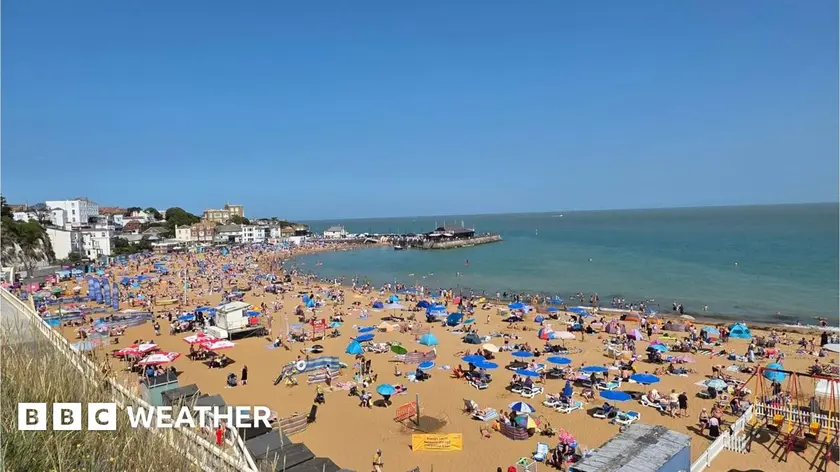T4K3.news
Heat alert updates
England faces a peak heat period this week with amber alerts in major regions. Check local guidance for cooling centers and health tips.

England issues yellow and amber heat alerts as a midweek peak in temperatures approaches 34C
Amber health alerts as heatwave temperatures hit 34C
A high pressure system over central Europe is driving hot air toward the UK. In nearby regions, such as France, temperatures have already surged with Nimes recording 41.8C. Across the UK, Tuesday is forecast to bring widespread 24 to 30C, with the London area near 30C and the Midlands possibly reaching 34C. The country is reminded of the record 35.8C set in Faversham, Kent, on 1 July 2025. Yellow heat health alerts cover England, while amber alerts are in place for London, the South East, East of England, East Midlands and West Midlands.
Nights will stay hot and humid for the first half of the week, increasing the risk of tropical nights in southern England. By Thursday and Friday, most places will cool into the low to mid 20s, but more heatwave days are possible in southern England as the pattern lingers.
Key Takeaways
"Heat is a test of the public's readiness, not just a weather forecast"
editorial comment on resilience and planning
"Tropical nights threaten sleep and health in the heart of summer"
emphasizing night time risk
"Every forecast is a reminder to look after the vulnerable"
public health call to action
"Heat alerts show how climate change reshapes daily life"
policy and planning implication
The forecast tests public health readiness and city planning. Extreme heat can stress healthcare services and push energy demand higher, so clear guidance and local cooling options matter. Authorities will rely on messaging to protect vulnerable groups, especially the elderly and those without air conditioning. The situation also highlights the need for long term climate adaptation in urban design and emergency planning.
As heat becomes a regular feature of summers, officials must balance short term advisories with longer term investments in cooling centers, shade, and heat-resilient infrastructure. The current event shows how weather alerts translate into daily life and policy choices, from transport to housing, in a warming climate.
Highlights
- Heat is a test of the public's readiness not just a weather forecast
- Tropical nights threaten sleep and health in the heart of summer
- Every forecast is a reminder to look after the vulnerable
- Heat alerts show how climate change reshapes daily life
Public health guidance will continue as the heat builds.
Enjoyed this? Let your friends know!
Related News

UK heat alert update

Amber heat alert hits large parts of England

UK faces fourth heatwave

UK heatwave warning

India sets daunting target for England in final Test

Porsche updates two 911 race cars

Heat health alert across England warns of higher risk

Greece initiated weather alerts for high temperatures
